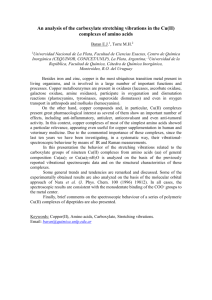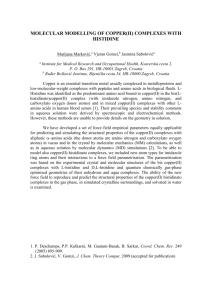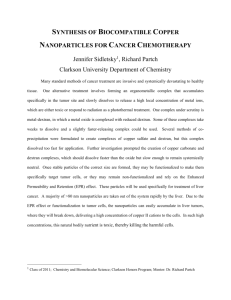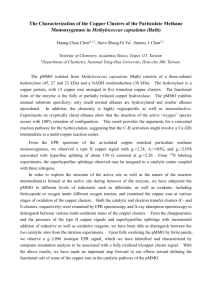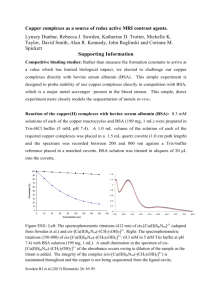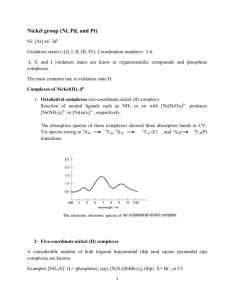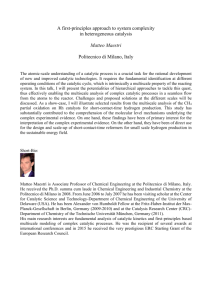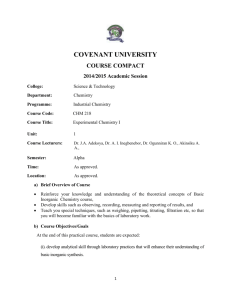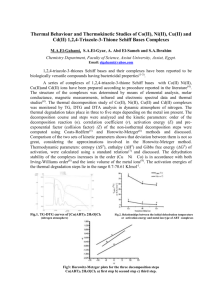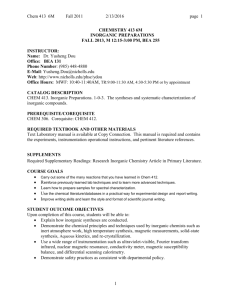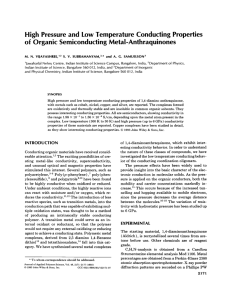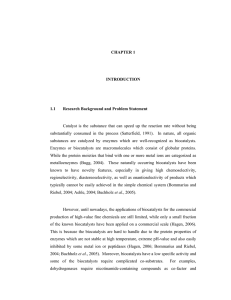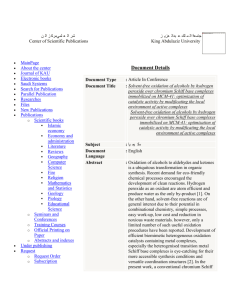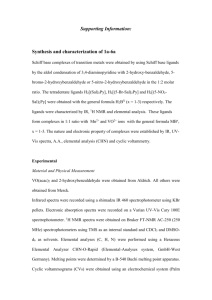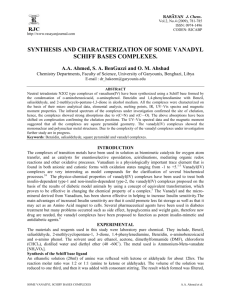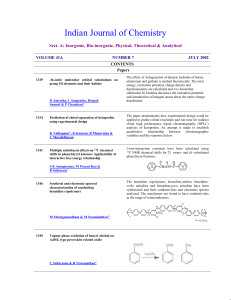This article was downloaded by: [Abd El
advertisement
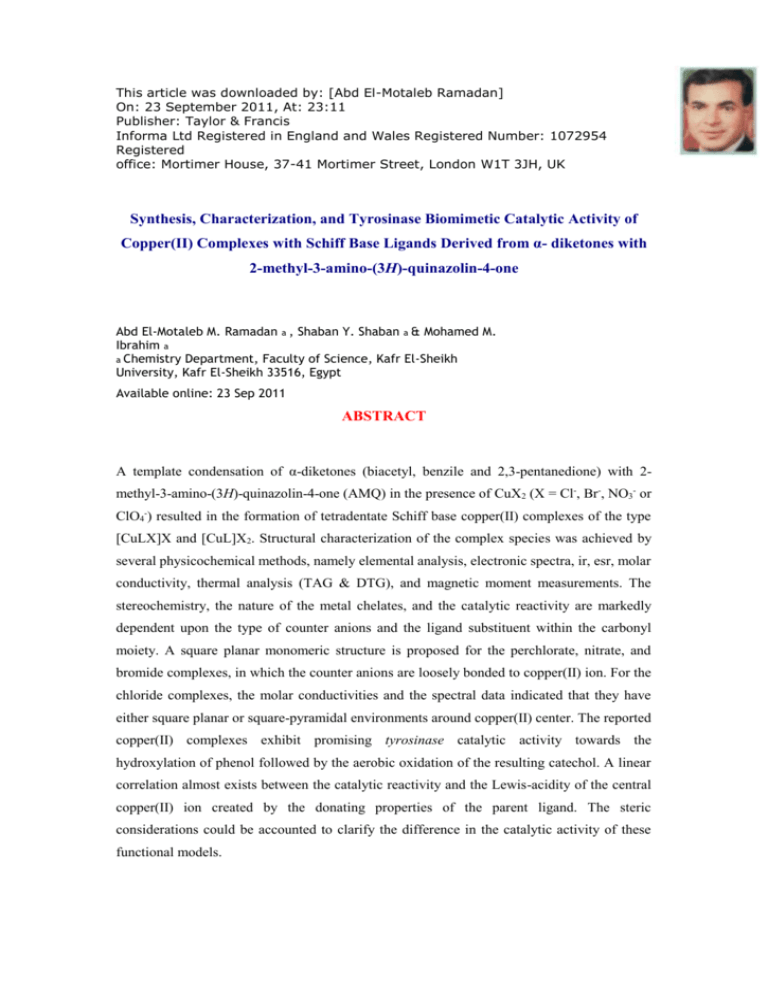
This article was downloaded by: [Abd El-Motaleb Ramadan] On: 23 September 2011, At: 23:11 Publisher: Taylor & Francis Informa Ltd Registered in England and Wales Registered Number: 1072954 Registered office: Mortimer House, 37-41 Mortimer Street, London W1T 3JH, UK Synthesis, Characterization, and Tyrosinase Biomimetic Catalytic Activity of Copper(II) Complexes with Schiff Base Ligands Derived from α- diketones with 2-methyl-3-amino-(3H)-quinazolin-4-one Abd El-Motaleb M. Ramadan a , Shaban Y. Shaban a & Mohamed M. Ibrahim a a Chemistry Department, Faculty of Science, Kafr El-Sheikh University, Kafr El-Sheikh 33516, Egypt Available online: 23 Sep 2011 ABSTRACT A template condensation of α-diketones (biacetyl, benzile and 2,3-pentanedione) with 2methyl-3-amino-(3H)-quinazolin-4-one (AMQ) in the presence of CuX2 (X = Cl-, Br-, NO3- or ClO4-) resulted in the formation of tetradentate Schiff base copper(II) complexes of the type [CuLX]X and [CuL]X2. Structural characterization of the complex species was achieved by several physicochemical methods, namely elemental analysis, electronic spectra, ir, esr, molar conductivity, thermal analysis (TAG & DTG), and magnetic moment measurements. The stereochemistry, the nature of the metal chelates, and the catalytic reactivity are markedly dependent upon the type of counter anions and the ligand substituent within the carbonyl moiety. A square planar monomeric structure is proposed for the perchlorate, nitrate, and bromide complexes, in which the counter anions are loosely bonded to copper(II) ion. For the chloride complexes, the molar conductivities and the spectral data indicated that they have either square planar or square-pyramidal environments around copper(II) center. The reported copper(II) complexes exhibit promising tyrosinase catalytic activity towards the hydroxylation of phenol followed by the aerobic oxidation of the resulting catechol. A linear correlation almost exists between the catalytic reactivity and the Lewis-acidity of the central copper(II) ion created by the donating properties of the parent ligand. The steric considerations could be accounted to clarify the difference in the catalytic activity of these functional models.

